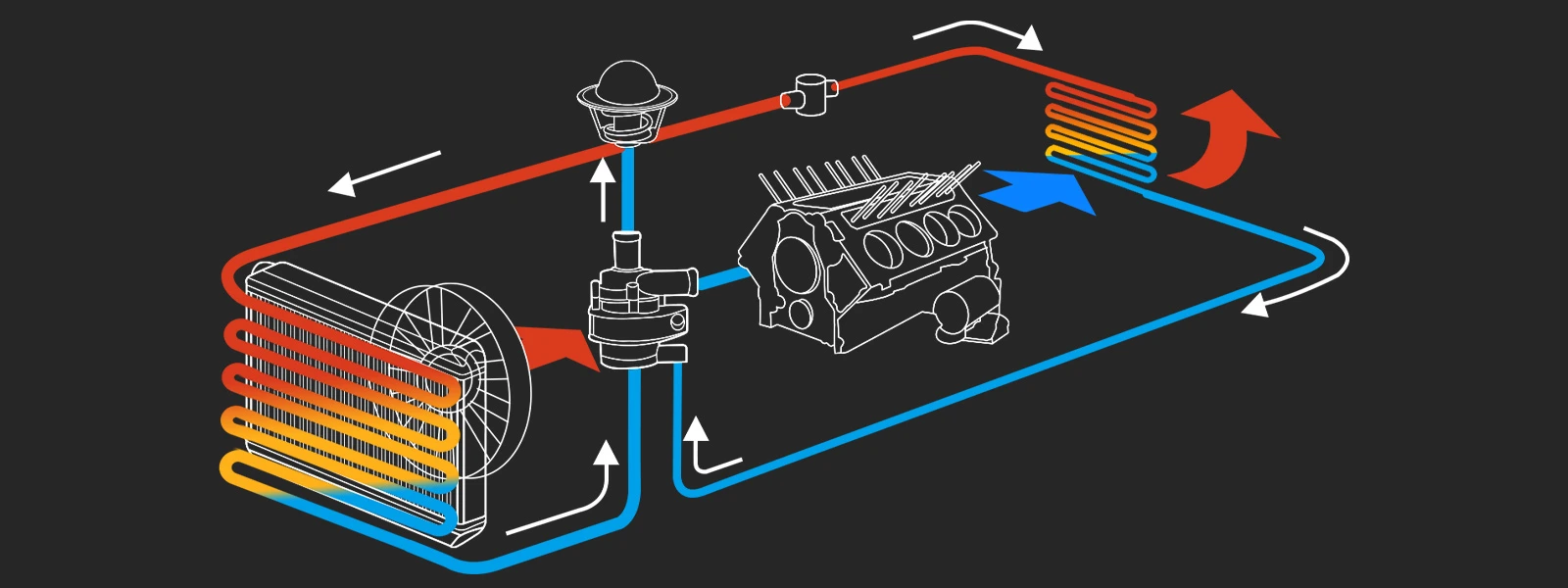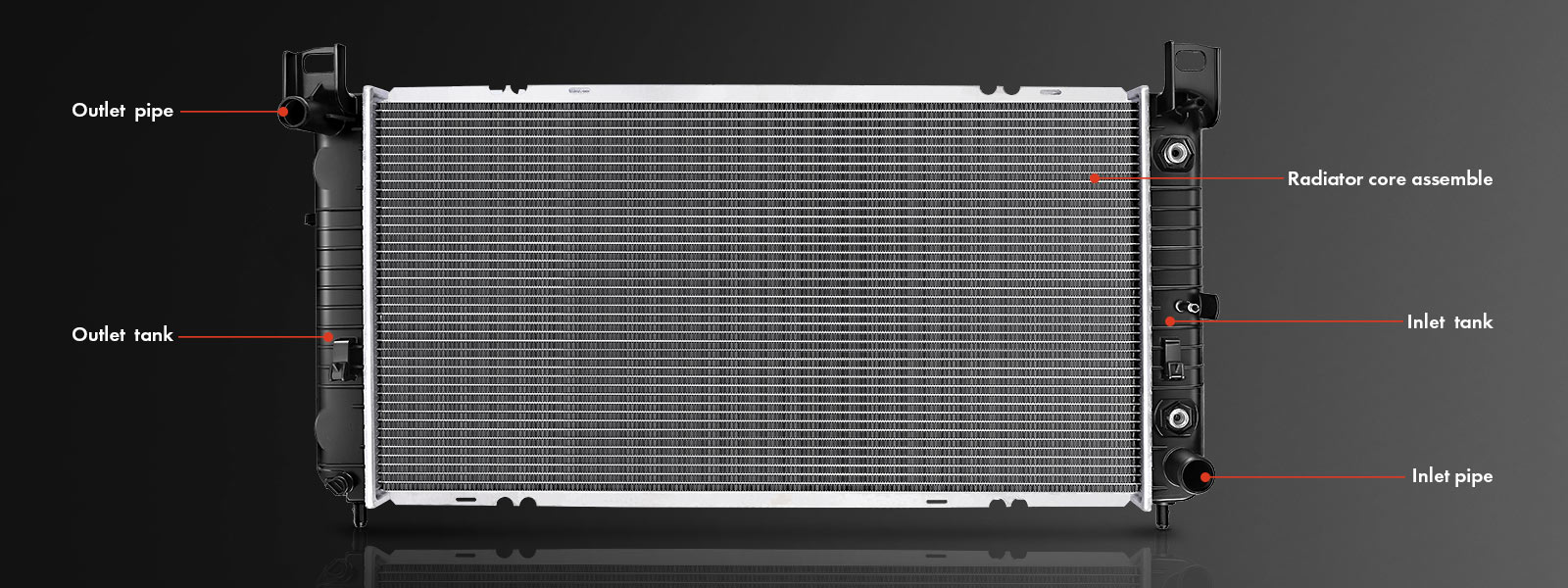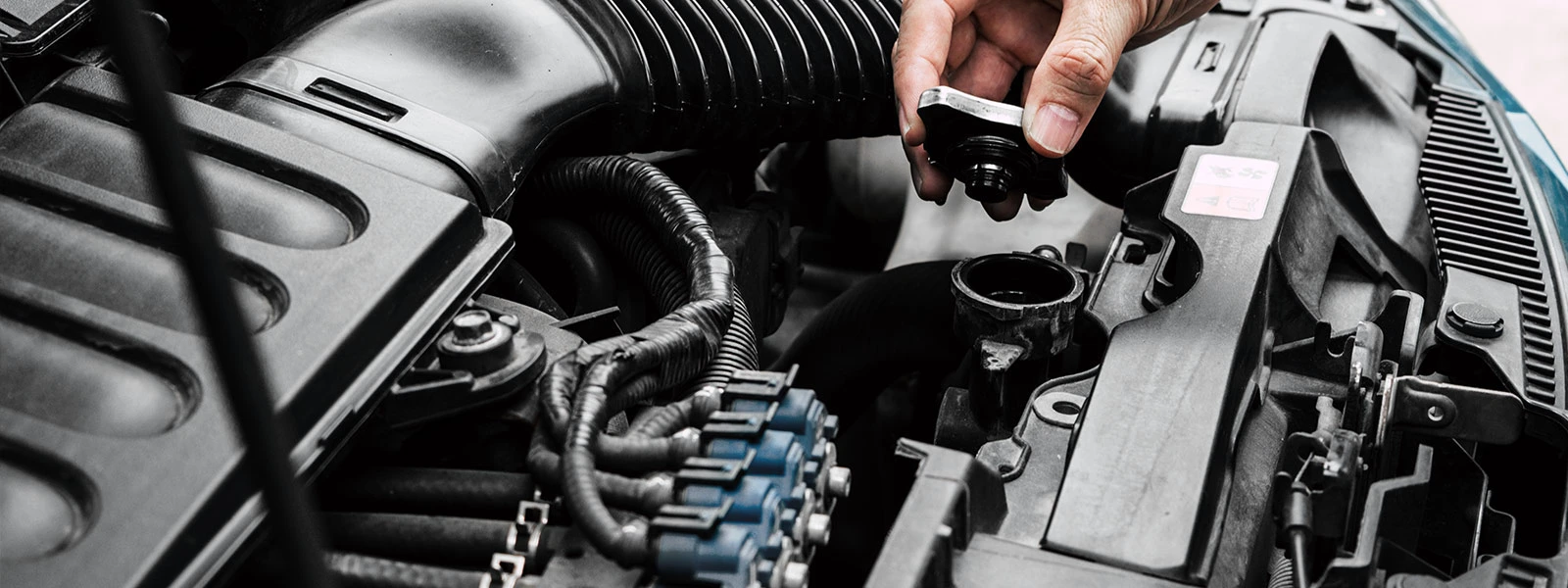What is a radiator in a car?
In the realm of automobiles, the car radiator assumes a crucial role as a vital component within the intricate web of an engine's cooling system. It serves as a linchpin, ensuring that the vehicle operates smoothly and efficiently by effectively regulating engine temperatures. By facilitating the exchange of heat between the circulating coolant and the surrounding air, the radiator guarantees optimal performance and longevity for various automotive systems.

In most cars, the radiator is typically located at the front of the vehicle, behind the grille and in front of the engine. This positioning allows for efficient airflow and cooling. Placing the radiator at the front enables it to receive a steady stream of air as the vehicle moves, aiding in the dissipation of heat from the coolant. The location also allows for easy access and maintenance, as well as protection from potential damage caused by debris on the road.
How does the radiator work?
A car radiator operates on the principle of heat transfer to cool the engine. The hot coolant from the engine enters the radiator and flows through a series of small tubes. These tubes are designed to have thin walls, promoting efficient heat transfer. As the hot coolant flows through the tubes, heat is conducted from the coolant to the metal walls of the tubes. This process allows the heat to transfer from the coolant to the tubes.
To enhance the cooling process, the radiator is equipped with fins attached to the tubes. These fins increase the surface area available for heat dissipation. As the hot coolant transfers heat to the tubes, the radiator fan draws air through the radiator. The airflow, combined with the increased surface area provided by the fins, facilitates convective heat transfer. The cooler air passing over the hot tubes carries away the heat, effectively cooling down the coolant. The cooled coolant then exits the radiator and circulates back to the engine to absorb more heat, ensuring the engine remains at the optimal operating temperature.
Components of radiator
Generally, a radiator consists of a core with tubes and fins for heat transfer, tanks for coolant flow, a pressure cap, and mounting brackets. The three main parts can be the core, the pressure cap, and the tanks.
- The core is the central part of the radiator, usually made of metal such as aluminum or copper. It consists of a series of tubes and fins that provide a large surface area for heat transfer.
- The radiator has a pressure cap that maintains the pressure inside the cooling system. It helps increase the boiling point of the coolant, preventing it from evaporating and ensuring efficient heat transfer.
- The radiator has two tanks, one on each side, which are connected to the tubes. The upper tank is called the inlet tank, while the lower tank is the outlet tank. These tanks provide an entry and exit point for the coolant or hot water.

Types of radiators
Understanding the different types of radiators is crucial for proper maintenance, repairs, and troubleshooting of a vehicle's cooling system. It allows for informed decisions when selecting replacements or upgrades, ensures compatibility with components, and enables customization for optimal performance. Knowledge of radiator types empowers car owners to make informed choices regarding cooling system components, resulting in efficient and reliable vehicle operation.
The different types of radiators serve specific purposes and are chosen based on factors such as vehicle design, cooling requirements, and cost considerations. Here are some common types:
- Single-Tube Radiator: This is a basic type of radiator where coolant flows through a single tube, which is surrounded by fins for heat dissipation. It is a simple and cost-effective design commonly found in older or smaller vehicles.
- Downflow Radiator: Downflow radiators have tanks at the top and bottom, with coolant flowing vertically from the top tank to the bottom tank. The tubes and fins are arranged horizontally, providing effective heat dissipation. This type of radiator is commonly found in older vehicles or those with limited space in the engine compartment.
- Crossflow Radiator: Crossflow radiators have tanks on each side, with coolant flowing horizontally from one tank to the other. The tubes and fins are arranged vertically, allowing for efficient heat transfer. Crossflow radiators are widely used in modern vehicles due to their compact size and effective cooling capabilities.
- Aluminum Radiator: Aluminum radiators are lightweight and offer excellent heat transfer properties. They are commonly used in modern vehicles to optimize weight reduction and improve cooling efficiency. Aluminum radiators are more corrosion-resistant than traditional copper radiators.
Radiator failure
Radiators can fail due to corrosion, physical damage, clogging, leaks, fan failure, or pressure issues. The engine can experience overheating in hot weather conditions, but the chances of overheating significantly increase when the radiator has insufficient coolant or when there is a hose leak. Additional potential causes of radiator failure include a malfunctioning thermostat, problems with the fan's mechanics, or a defective pressure cap that fails to maintain proper system pressure, leading to coolant overflow. In any of these situations, the engine can overheat, causing significant damage.
To prevent costly repairs, car owners should familiarize themselves with the bad radiator symptoms which may include:
- Overheating: Consistent engine overheating or reaching high temperatures.
- Coolant leaks: Noticeable coolant puddles or a sweet smell indicating a radiator leak.
- Low coolant levels: Frequent need to refill the coolant reservoir or consistent coolant level decrease.
- Discolored coolant: Rusty, muddy, or contaminated coolant in the reservoir.
- Rapid temperature fluctuations: Erratic temperature gauge readings with sudden spikes or drops.
Radiator maintenance
Radiator maintenance is essential for the proper functioning and longevity of your vehicle's cooling system. Regular maintenance helps prevent issues such as overheating, coolant leaks, and radiator failure, which can lead to costly repairs and potential engine damage.
- Replace radiator hoses every three years or at 36,000 miles. Rubberized hoses can dry out and become brittle over time, so it's recommended to replace them before reaching 50,000 miles of driving.
- Regularly monitor coolant levels. If you notice a significant decrease in fluid level between checks, it could indicate a cooling system leak. Be attentive as small leaks may be challenging to detect.
- Schedule a coolant flush every 25,000 miles to eliminate any impurities in the radiator and hoses. This maintenance procedure also helps prevent rusting of components and ensures optimal radiator performance throughout its lifespan.

Explore More Contents
- Other Topics about Car Radiators
- More Hot Topics in A-Premium












